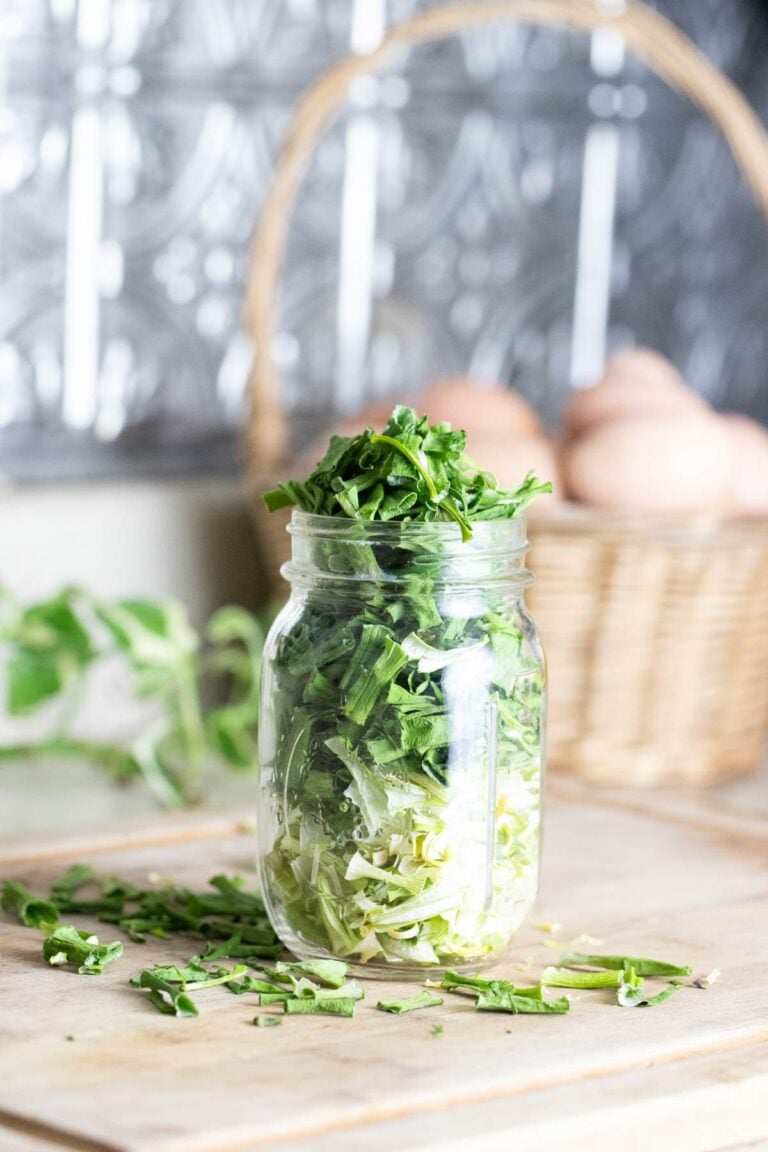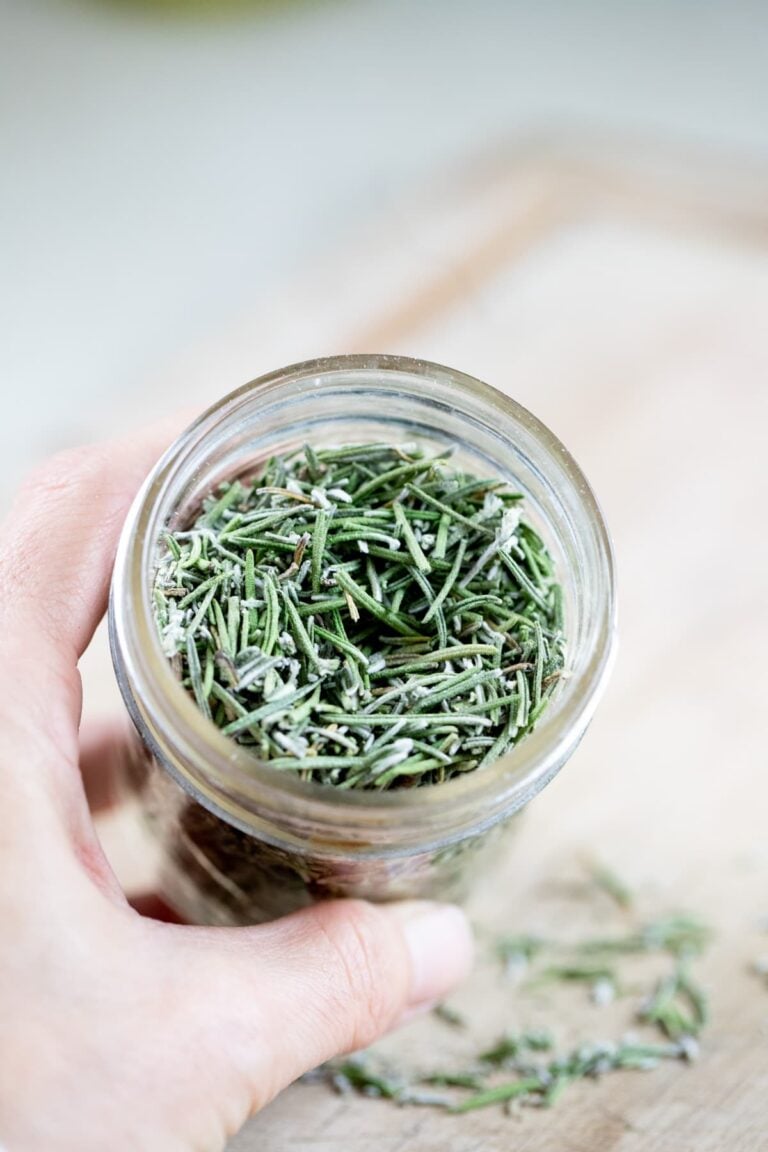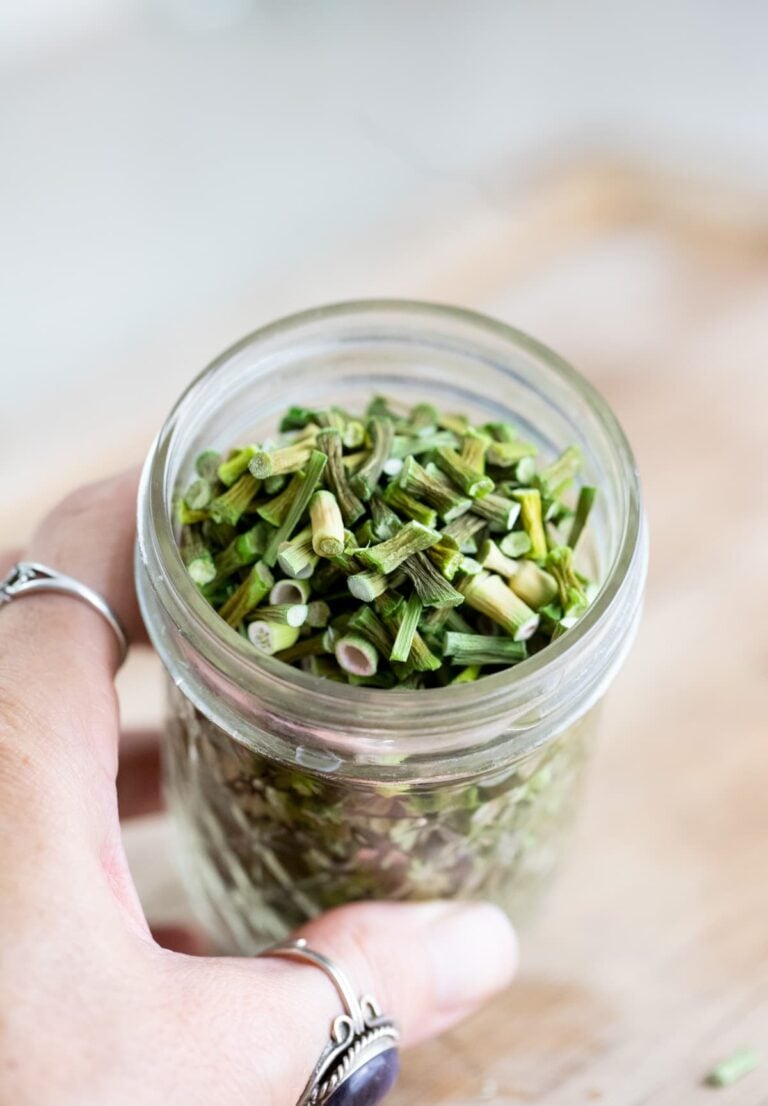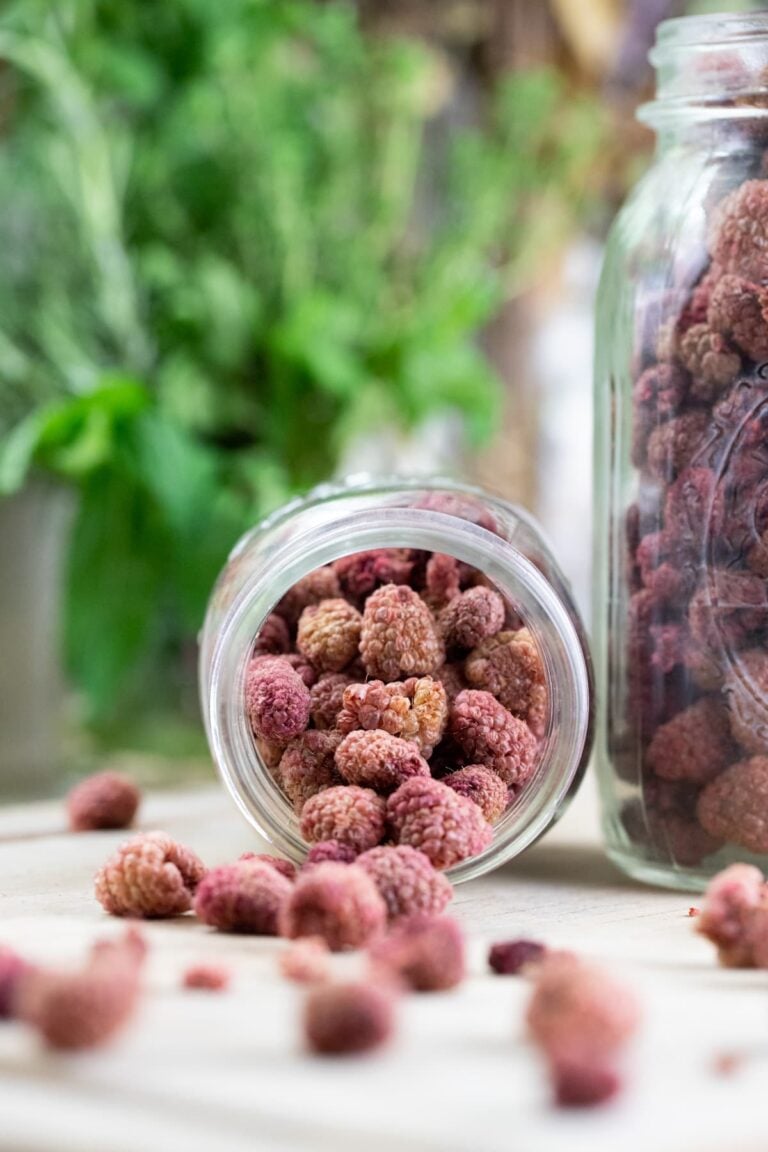Dehydrating Beets
This post may contain affiliate links, view our disclosure policy for details.
Dehydrating beets at home is simple and a great way to preserve them and store them at room temperature for a very long time. Dehydrated beets are easy to use and a great ingredient to have on the shelf.
Beets… Oh beets… If you told me that I could only grow one vegetable in my garden I’d choose beets. I love love love beets! They aren’t the easiest crop to grow but over the years I more or less perfected my beet-growing skills. It wasn’t easy but it was so worth it.
Beets are so healthy, so filling, so beautiful in the garden… You can eat any part of them, the tops and the root, and they can be stored in many different ways for the long term. For anyone who grows some of their own food, this crop is a must in the garden.
Dehydrating Beets at Home…
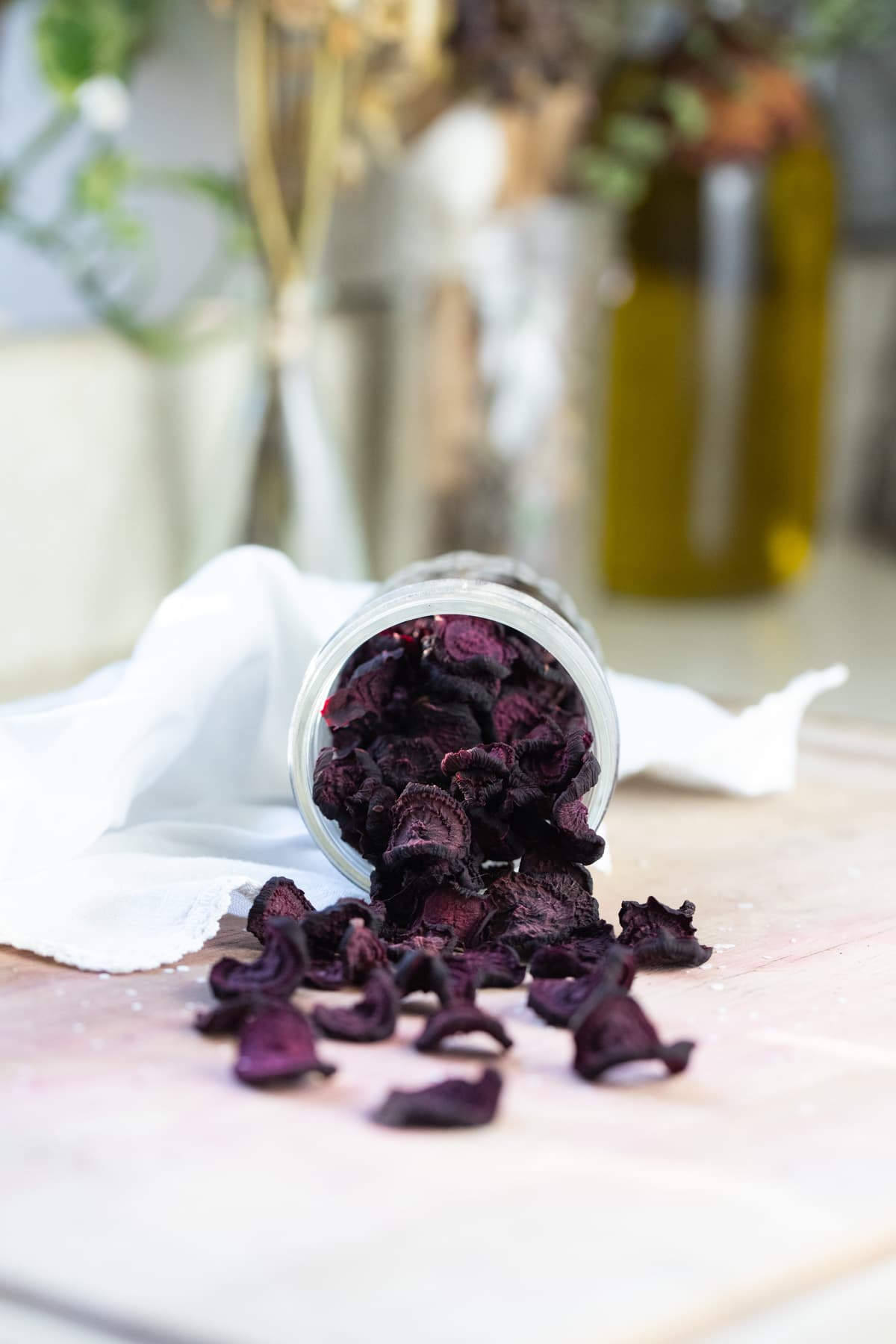
I try to have beets stored in a few different ways. I can some of my beets (here is the video)… I mostly use them to make a delicious Israeli beet salad or add them to this pumpkin beetroot salad in the fall. I also lacto-ferment some of my beets (here is the video) and I pickle some of my beets, I’ll take them as a side to a sandwich any day! And I keep many of my beets in the fridge since they’ll last for months. Dehydrating beets is new to me and I couldn’t wait to try this form of beet preservation!
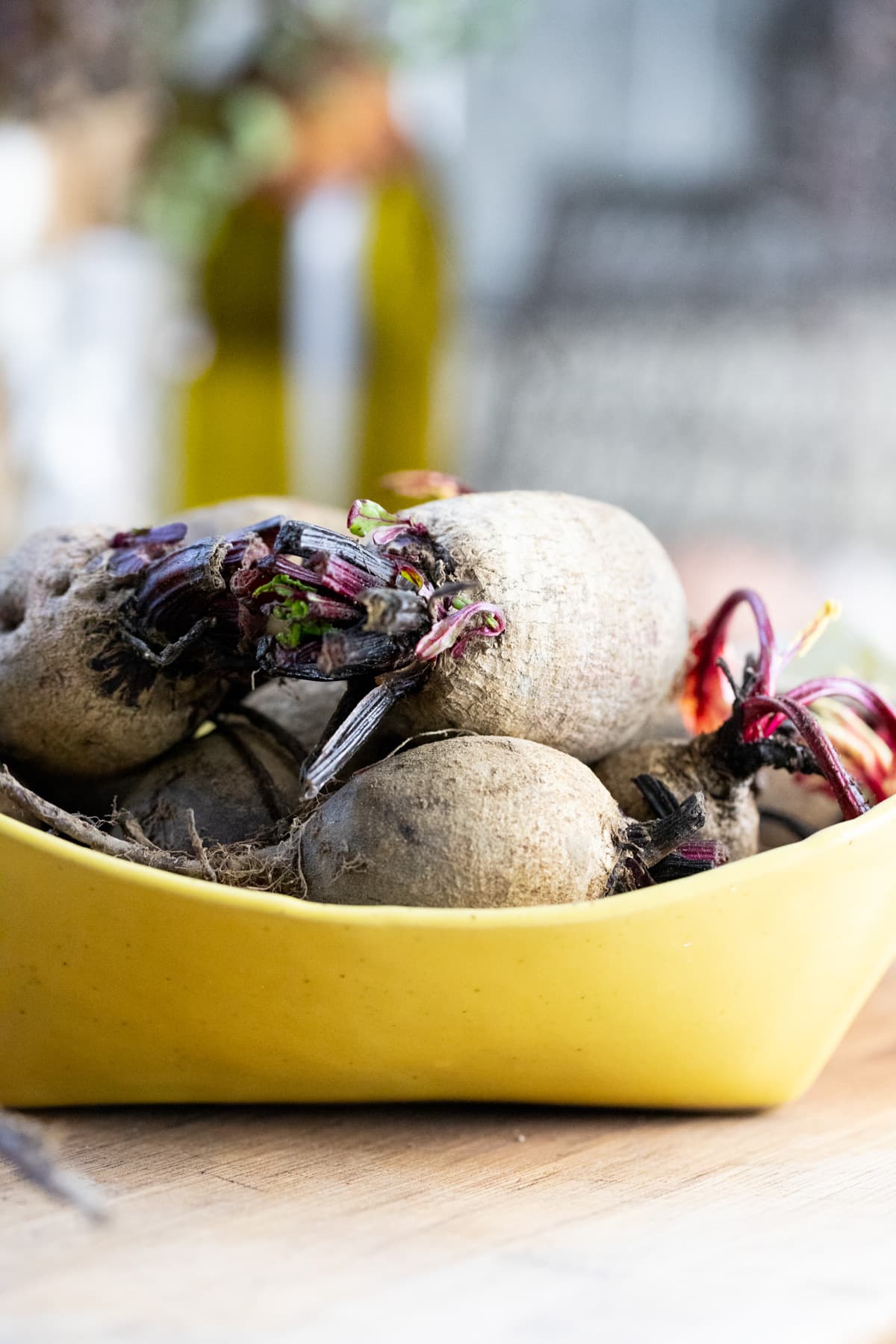
Ingredients…
- Beets – Any variety.
Kitchen Tools…
- Knife or kitchen mandoline
- Cutting board
- Pot to boil water in – for blanching the beets.
- Over the sink strainer – this is easier for me to use (you’ll see below how I use it. But you can also use a skimmer ladle and scoop the beets from the hot water into a large mixing bowl of ice water.
- Dehydrator – I am using a nice dehydrator that allows me to control the temperature and produces a better end result (it also has a timer which means I can set it and forget it!). If you don’t have one of those, you can still dehydrate beets in the oven or in a cheap (no temperature control) dehydrator. More on this in the FAQ section below.
- Air tight storage container (I use jars)
Dehydrating Beets Step By Step…
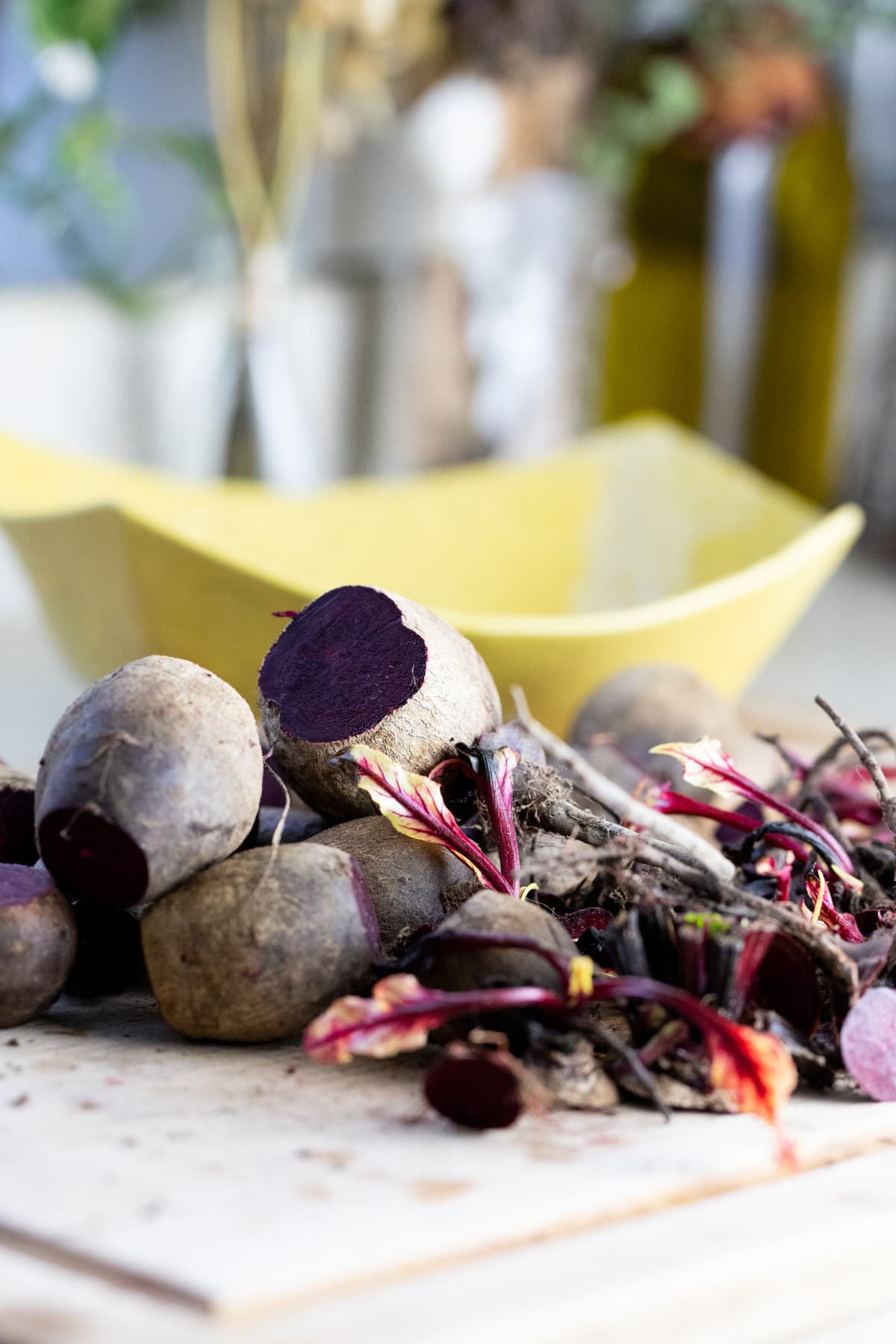
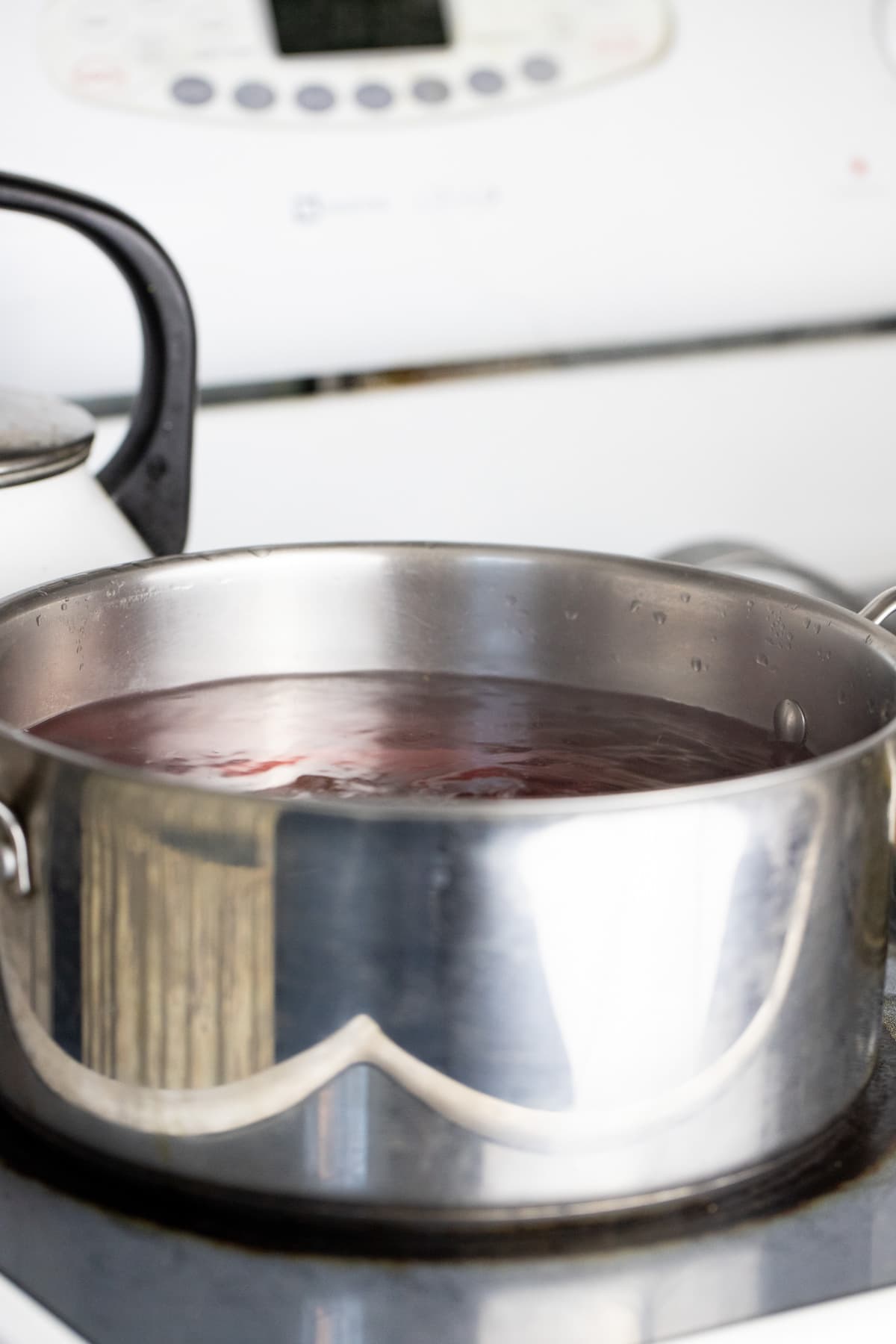
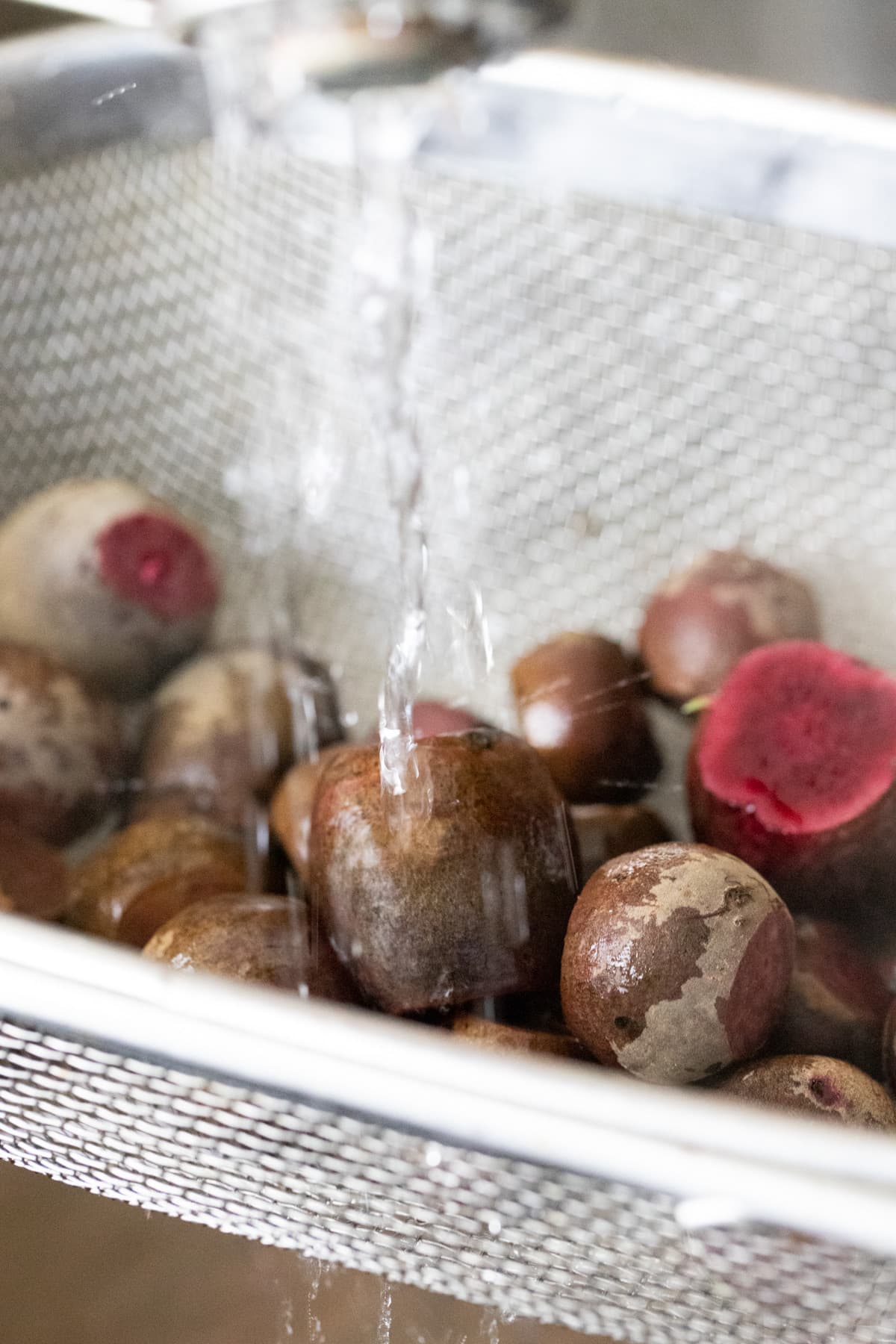
Step one – blanch the beets. This is a step that we don’t do with all vegetables before dehydrating and it’s not a must with beets. I choose to blanch my beets because blanching will…
- Kill all bacteria that might have been left behind from the soil the beets grew in
- It will help us preserve the color of the beets
- It helps us preserve the texture of the beets
- And it makes it easier to peel and slice the beets
To blanch the beets, fill a pot with water. Set it on the stovetop and let it come to a boil. Remove the tops and root ends of the beets and wash them well. Add the beets (in batches if you are processing many of them) and let them rest in the water for 10 minutes or so. Then, transfer the beets into a strainer and run cold water on them for a minute or two to stop the cooking.
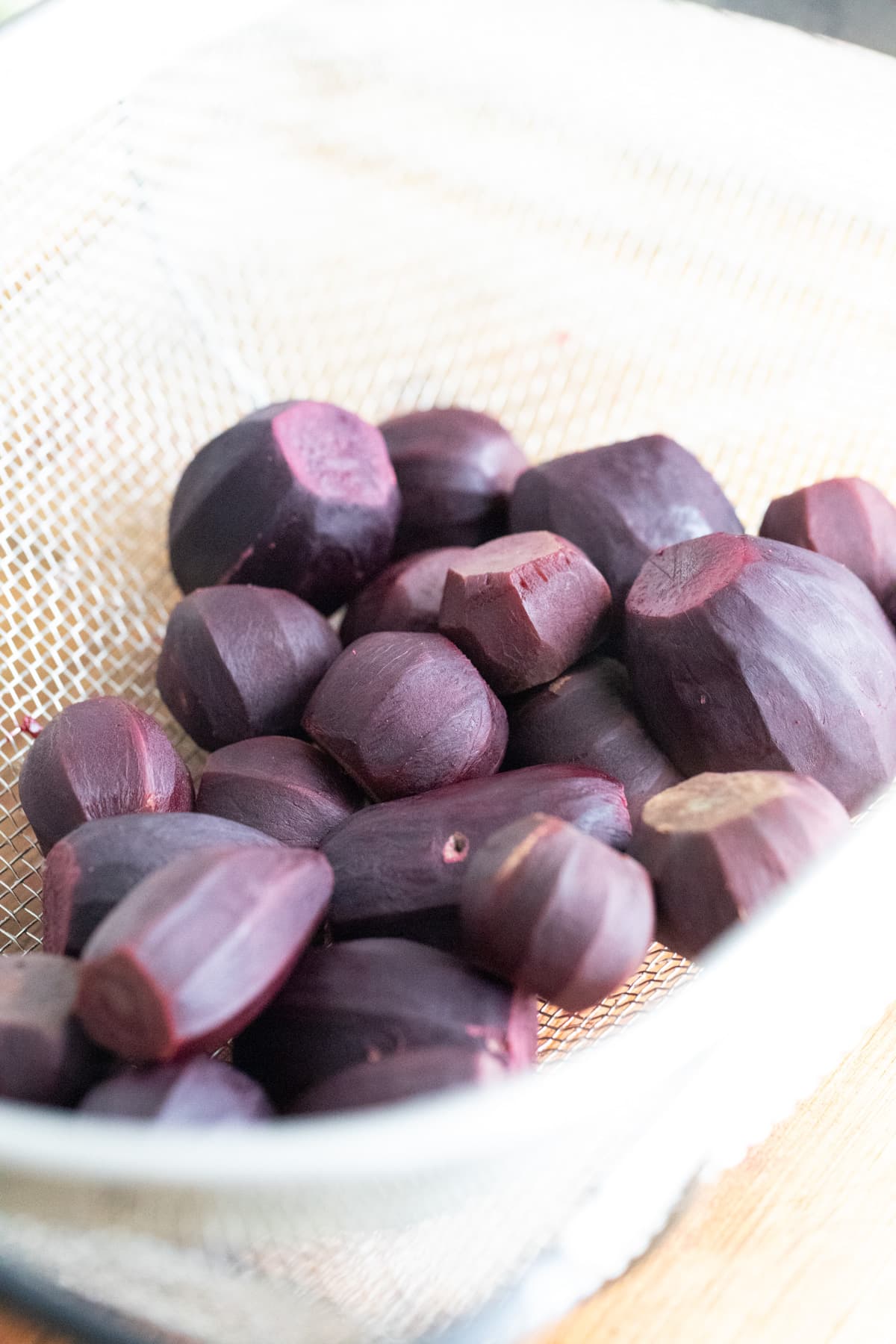
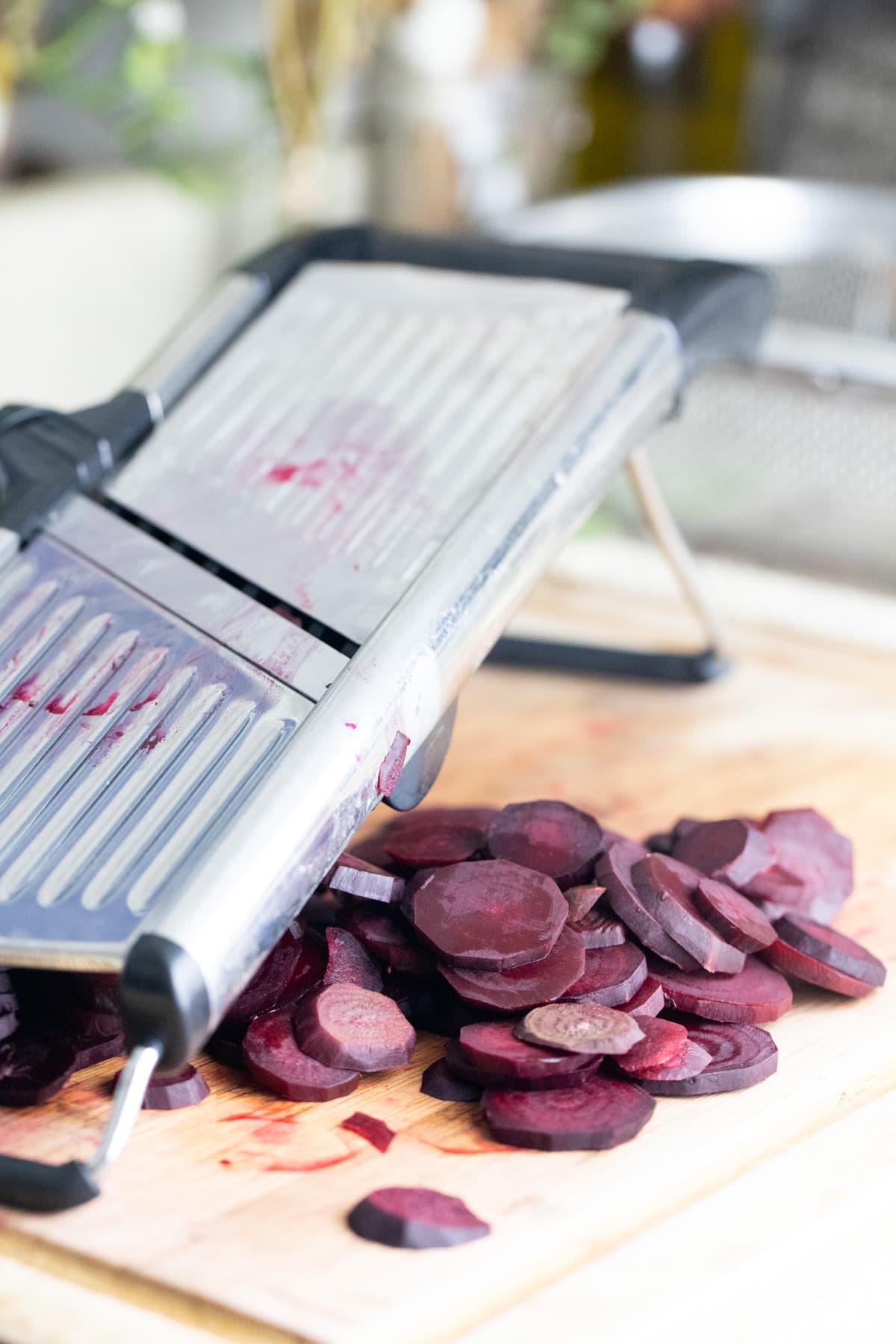
Step two – peel and slice. Once your beets are cool enough to touch, go ahead and peel them. Sometimes the skin comes right off and you can peel the beets with just your hands after boiling them, however, I usually still use a vegetable peeler. As far as cutting the beets, you have three options…
- Cube them
- Slice them into coins
- Or shred them
I chose to slice my beets into coins that are about 1/4 inch thick or a little thinner. I used a kitchen mandoline (set on 3mm) to do that. You can use a knife but the mandoline not only makes it easier and quicker, but it also slices the beets uniformly so the slices dry evenly.
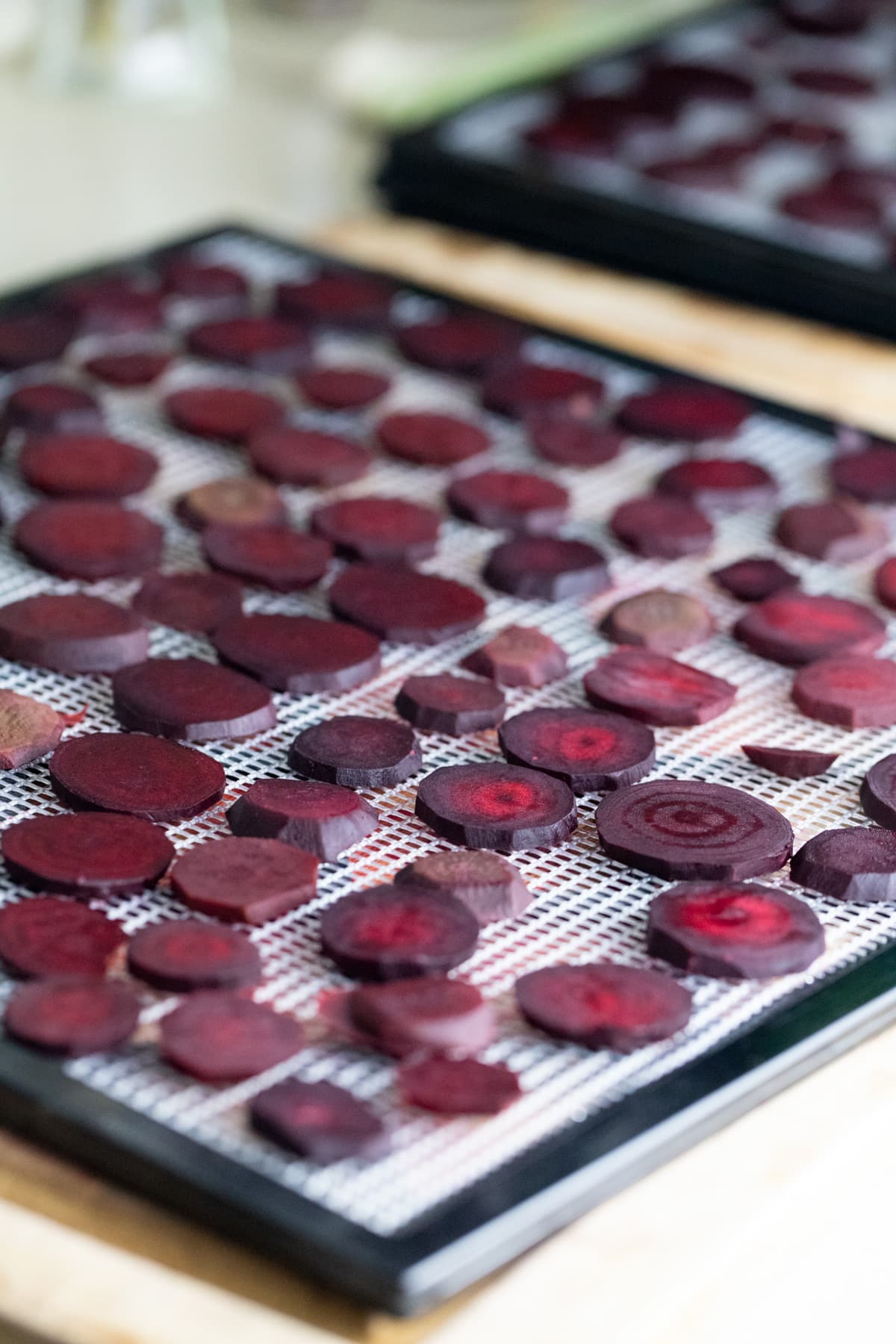
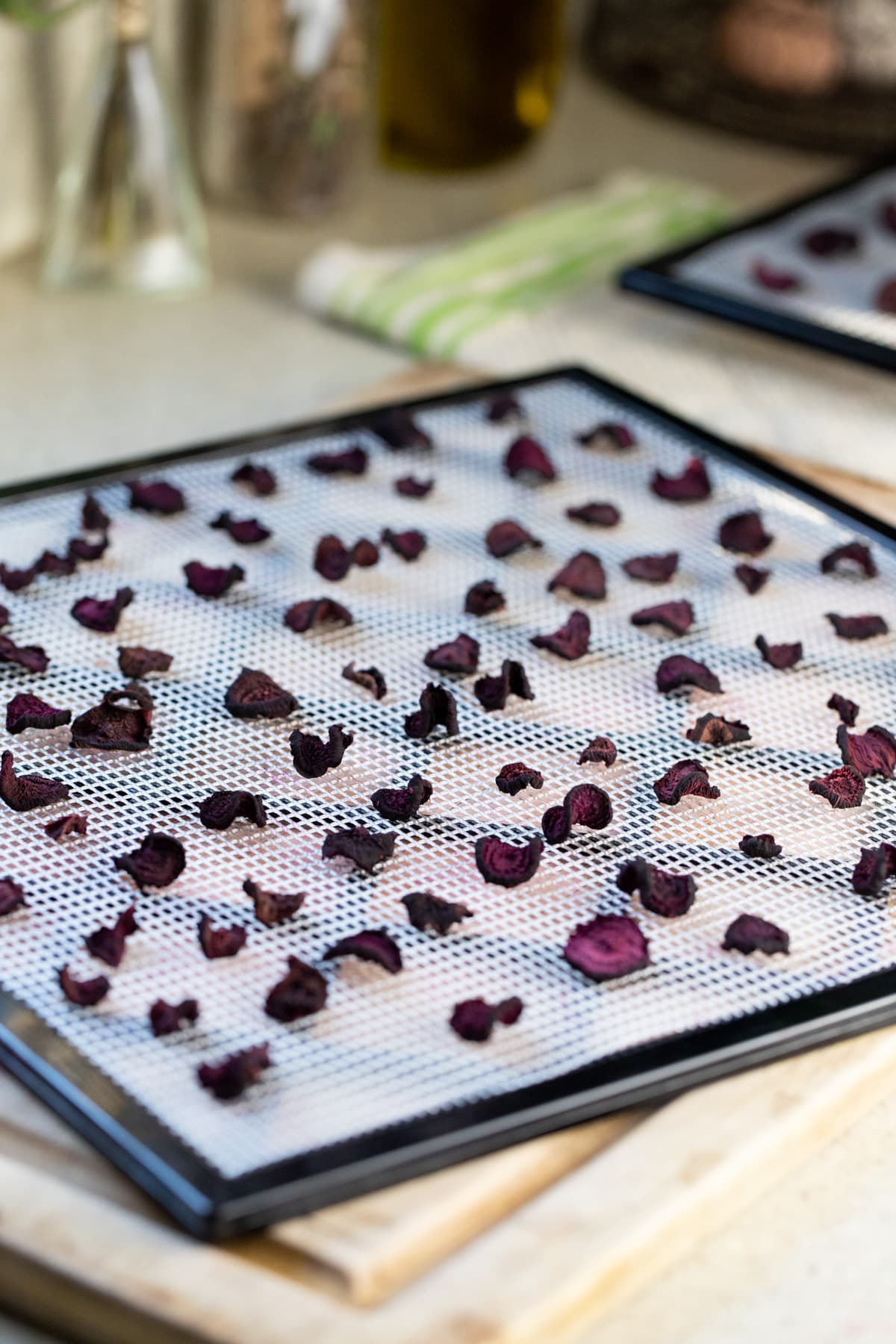
Step three – dehydrate. Transfer the beets onto the trays of the dehydrator and set them in one layer. Dehydrate at 125 degrees Fahrenheit for 12 hours. For coins like mine, this was enough. If you’re dehydrating diced beets you might need to add a few more hours. If you’re dehydrating shredded beets, 6-8 hours will probably be enough.

How to Store Dehydrated Beets…
Once the beets are dry, let them cool for a few minutes and then transfer them to an air-tight container. You can vacuum seal them or use zip-lock bags, however, in my opinion, jars with two-piece lids work best for storage and are beautiful on the shelf!
How to Condition Dehydrated Vegetables…
If you’re going to store your dehydrated beets for the long term, make sure to condition the beets. This means that after storage, every day for about a week, check to make sure that there is no moisture on the inside of your air-tight container. If you spot moisture, remove the beets and dehydrate them again for a few more hours. Then transfer to an air-tight container and condition again. If, after a week, there is no moisture your beets are OK to be stored for the long term at room temperature.
How to Rehydrate Beets…
- In boiling water – pour boiling water on the beets and let them rest in the water for 15-30 minutes.
- In cool water – add the beets to a bowl of cool water and let them rest there for a few hours until they are fully re-hydrated. You can also place the bowl in the fridge overnight.
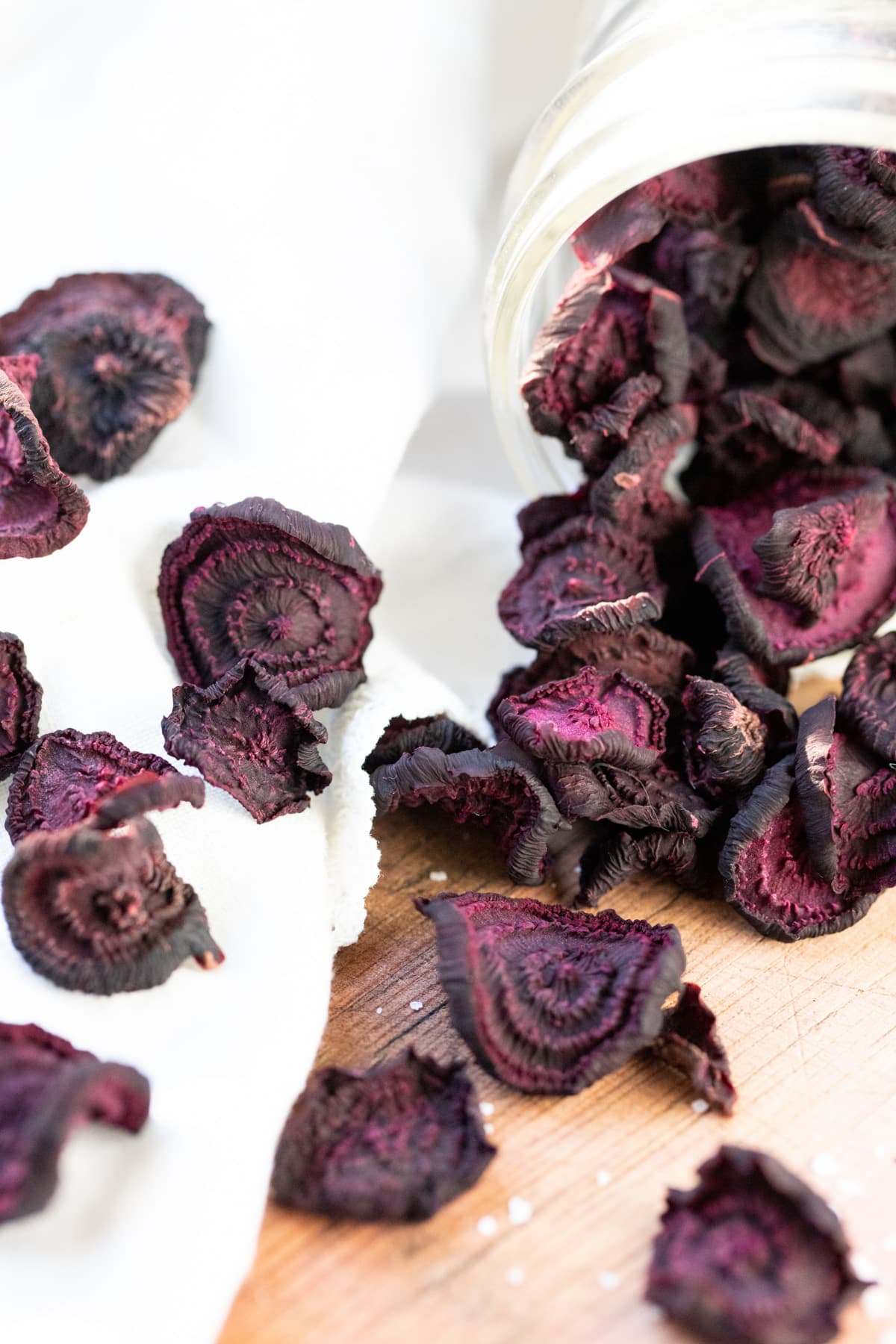
How to Use Dehydrated Beets…
- If you re-hydrated your beets, you can use them in any way that you usually use beets, in any recipe. You can roast them, add them to salads, and so on.
- If you are adding your beets to soups or stews, you can add them dry and they will rehydrate as the dish cooks. Try to add them to a vegetable soup for example.
How to Make and Use Beet Powder…
One of the greatest things about dehydrated food is that you can turn it into a powder. To make beet powder, place the dry beets in a coffee grinder and grind them until you get a powder. Store your powder in jars at room temperature. Use your beet powder for seasoning, add it to a mixed vegetable powder, or add it to smoothies. You can also use the powder to make a dye solution to naturally dye fabrics or for other craft projects.
Frequently Asked Questions…
Yes. Drying foods in a proper dehydrator where you can control the temperature produces a better result and preserves the nutrition better, however, if you don’t have a dehydrator, you can follow the same prep instructions and then: line a baking sheet with parchment paper and add the beets in one layer, turn your oven to its lowest temperature, and dehydrate your beets this way. Of course, drying time will change so keep checking your beets. Also, you might need to turn your baking sheet and/or turn the beet slices halfway through.
No, it’s not recommended.
The cheaper Presto dehydrator is very popular and you can find it at any Walmart or online. It runs at a temperature of 165 degrees Fahrenheit and there is no way to control the temperature. Yes, you can use this kind of dehydrator to dry beets. Again, for best results, we want to process vegetables at a temperature of 125 degrees Fahrenheit but a higher temperature will work as well. Drying time will probably be shorter, around 8-10 hours or so.
Yes, you can dehydrate frozen beets. Make sure to let them thaw first. And you can also dehydrate canned beets with no problem. You can even dehydrate cooked beets. If you, for some reason, roasted a lot of beets and you have leftovers, you can dehydrate them.
Yes! You can dehydrate beet tops the same way you’d dehydrate herbs like oregano. Once dry, you can crush or make a powder to use to season dishes.
You can certainly eat these dry as you’d eat beet chips. I do think that they will taste better as beet chips if they were sliced thinner and seasoned. I hope to post a recipe for beet chips soon.
Dehydrating beets is a great way to preserve them. They can last on the shelf at room temperature for many many years and are easy to use. They are a great ingredient to have around. I hope that you’ll give this a try!
More Dehydrating Tutorials…
- Drying Radish
- Dehydrating Carrots
- How to Dry Thyme
- Dehydrating Onions
- How to Dehydrate Watermelon
- How to Dry Cayenne Pepper
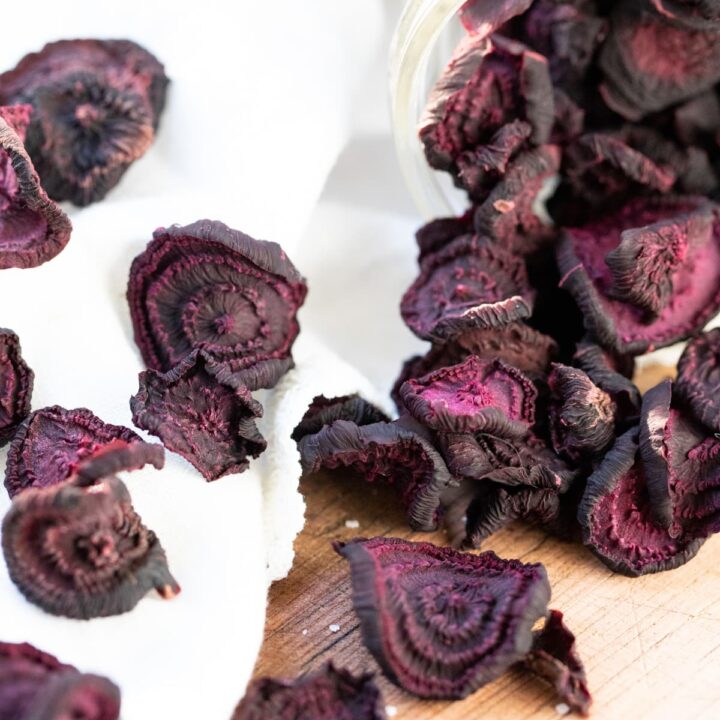
Dehydrating Beets
Step-by-step instructions for dehydrating beets.
Ingredients
- Beets (I processed 20 small-medium beets which produced a little over one-half pint of dry beets)
Instructions
- Blanch the beets. Fill a pot with water. Set it on the stovetop and let the water come to a boil. Remove the tops and root ends of the beets and wash them well. Add the beets (in batches if you are processing many of them) and let them rest in the boiling water for 10 minutes or so. Then, transfer the beets into a strainer and run cold water on them for a minute or two to stop the cooking.
- Once your beets are cool enough to touch, go ahead and peel them. Sometimes the skin comes right off and you can peel the beets with just your hands after boiling them, however, I usually still use a vegetable peeler. As far as cutting the beets, you have three options…
Cube them
Slice them into coins, or
Shred them
I chose to slice my beets into coins that are about 1/4 inch thick or a little thinner. I used a kitchen mandoline (set on 3mm) to do that. You can use a knife but the mandoline not only makes it easier and quicker, but it also slices the beets uniformly so the slices dry evenly. - Transfer the beets onto the trays of the dehydrator and set them in one layer. Dehydrate at 125 degrees Fahrenheit for 12 hours. For coins like mine, this was enough. If you’re dehydrating diced beets you might need to add a few more hours. If you’re dehydrating shredded beets, 6-8 hours will probably be enough.
- Once the beets are dry, let them cool for a few minutes and then transfer them to an air-tight container. You can vacuum seal them or use zip-lock bags, however, in my opinion, jars with two-piece lids work best for storage and are beautiful on the shelf!
Notes
Frequently Asked Questions...
- Can I dehydrate beets in the oven?
Yes. Drying foods in a proper dehydrator where you can control the temperature produces a better result and preserves the nutrition better, however, if you don’t have a dehydrator, you can follow the same prep instructions and then: line a baking sheet with parchment paper and add the beets in one layer, turn your oven to its lowest temperature, and dehydrate your beets this way. Of course, drying time will change so keep checking your beets. Also, you might need to turn your baking sheet and/or turn the beet slices halfway through. - Can I dehydrate whole beets?
No, it’s not recommended. - I can’t control the temperature on my dehydrator, can I still use it?
The cheaper Presto dehydrator is very popular and you can find it at any Walmart or online. It runs at a temperature of 165 degrees Fahrenheit and there is no way to control the temperature. Yes, you can use this kind of dehydrator to dry beets. Again, for best results, we want to process vegetables at a temperature of 125 degrees Fahrenheit but a higher temperature will work as well. Drying time will probably be shorter, around 8-10 hours or so. - Can I dehydrate frozen beets? What about canned beets?
Yes, you can dehydrate frozen beets. Make sure to let them thaw first. And you can also dehydrate canned beets with no problem. You can even dehydrate cooked beets. If you, for some reason, roasted a lot of beets and you have leftovers, you can dehydrate them. - Can I dehydrate beet tops?
Yes! You can dehydrate beet tops the same way you’d dehydrate herbs like oregano. Once dry, you can crush or make a powder to use to season dishes. - Are these dehydrated beets the same as beet chips?
You can certainly eat these dry as you’d eat beet chips. I do think that they will taste better as beet chips if they were sliced thinner and seasoned. I hope to post a recipe for beet chips soon.
Nutrition Information:
Yield: 20 Serving Size: 1Amount Per Serving: Calories: 1Total Fat: 0gSaturated Fat: 0gTrans Fat: 0gUnsaturated Fat: 0gCholesterol: 0mgSodium: 2mgCarbohydrates: 0gFiber: 0gSugar: 0gProtein: 0g


